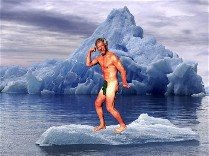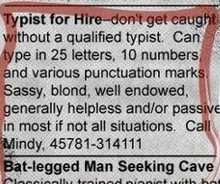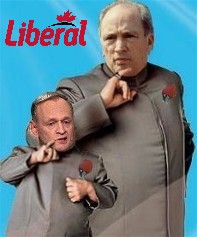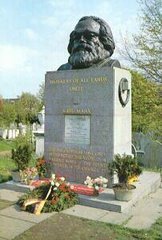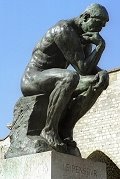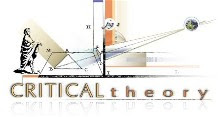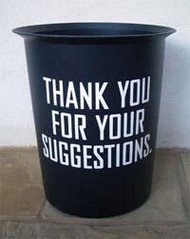Margaret Mead once poked gentle fun at her own profession by saying that if you want to understand the values of a culture, study the stories told to children because such stories communicate essential cultural values in terms simple enough that even a social scientist can understand. Stories create an emotional experience that simple declarative statements or instructions do not and cannot. By identifying with the protagonists of a story, we can understand universal human emotions and experiences in a manner profoundly different than having the same information summarized to us. Anyone who has ever attended a live sporting event or a play can easily understand the difference between the immediate experience and reading a description of it in tomorrow's newspaper.
To truly understand myth, one must understand the different levels of truth possible within a particular description. Borrowing concepts from the science of Psycholinguistics, the study of language to understand the inner workings of the human mind, there are what are known as "deep structures" and "surface structures" in language that reflect essential building blocks of human thought. The terms are self-explantory to some degree. A surface structure is the appearance or form that is directly perceived: something of which we are clearly conscious. A deep structure is the mental foundation on which that consciousness rests. Like the foundation of a building, these deep structures are usually entirely hidden from our view and it is impossible for the casual observer to know they are there. Only someone who has studied the manner in which the surface structures are built, such as an architect or a contractor, knows that they are there and how they are constructed as well as how they relate to the surface structure.
Take a word like "matter". There are many meanings of the word "matter", which correspond to different surface structures: matter vs energy, mind over matter, it does or does not matter, business matters, legal matters, etc. Common to all these different surface structures are connotations of solidity and substance. If it "doesn't matter", it has no substance. If it "isn't matter", the same is true. The fact that the same word is used with slightly different surface meanings while there is a very broad and subtle concept that they have in common which underlies all the different uses of the word, is the key to understanding how language reflects the way that the mind organizes information and how we interpret the world.
Almost everyone is familiar with the fact that 90% of an iceberg lies below the surface of the water: thus the term "tip of the iceberg" which is used to describe the fact that often the most significant aspects are hidden from view. Often it is this hidden part that is the most significant, as passengers on the Titantic learned.
Viewed from far enough away, a chain of islands, like the island state, Hawaii, and a string of icebergs have very similar surface structures: roughly cone shapes with the tips up. Even below the surface of the water, the structures remain similar until you go deep down enough to either get under the iceberg or reach the ocean floor on which the island rests. At this point one realizes that the two are completely different. Since islands are nothing more than the tips of submerged mountains, if the water level drops the division between two islands may disappear and their surface structure become a single island. Nothing about their deep structure has changed. Icebergs, on the other hand, are not joined in any way; and even if the ocean were completely drained, they would simply rest on the ocean floor which is a deep structure entirely unrelated to the iceberg.
These days, everyone needs to become an architect of mind and study not only the deep structure truths underlying all that is around them, but also the deep structures within their own minds, if they are ever to make sense of this world and find meaning within their own lives.
--------------------------------------------------------------------------------
Myth
Adding the concepts of truth and falsehood to the concepts of deep and surface structures, a myth is a story in which the surface structure is false, ie. things did not happen exactly that way, but the deep structure is true, ie. that is a commonly observed way that people behave. Myths and legends of gods, goddesses, and heros illustrate human characteristics which have been observed over and over throughout history and which have been described as a single persona or personality akin to Carl Jung's "archetypes". From these personalities which represent common human characteristics, and the stories of the consequences of their choices and actions, people can predict the outcomes of a specific act on their part and gain the power to exercise more control over their lives by the conscious choice of their actions.
S= False
-------- = Myth
D= True
-------------------------------------------------------------------------------
Myth is frequently used synonymously with the word fiction. Througout these pages, however, those two words will have very different meanings. Like myth, the surface structure of fiction is false, it is not represented as reportage of actual events: but, unlike myth, there is no underlying deep structure of truth. Most works of fiction actually begin with the disclaimer that any resemblance to actual events is purely coincidental. The deep structure perhaps could be true, as in science fiction as opposed to fantasy, but it is not represented as true nor does the author intend for the audience to take it as truth. Fiction is that which has a surface structure which is false and a deep structure which may or may not be true, but whether it is true or not does not matter. Fictions are usually fantasies; although some may try to achieve a deeper meaning and significance, achieving the level of myth, depending on the intent and skill of the author.
S= False
---------- = Fiction
D= ? (irrelevant)
-------------------------------------------------------------------------------
Fantasy
Fantasy has surface and deep structures which are both false. Fantasies are stories which did not happen and could not happen. Fantasies are special forms of fiction, kind of "fiction light" which are solely for the purpose of entertainment.
S= False
---------- = Fantasy
D= False
--------------------------------------------------------------------------------
Fallacies and lies
Fallacies and lies are the opposite of myth. They have surface structures which are presented as true, but a deep structure which is false. What distinguishes a fallacy from a lie is the belief and intent of the person presenting the story or the information and whether what they present reflects what they believe. In 1491, if a person told you that the world was flat, it could not be anything but a fallacy. No one had proof to the contrary: no one knew. Lying is not possible without knowlege of deep structure truth or falsehood. Someone who sincerely believes that the deep structure of what they are presenting is true is not lying. They may be presenting a falsehood as truth out of ignorance, but it is sincere if deluded ignorance. Lying, on the other hand, is presenting a surface structure which the liar knows to be contrary to the deep structure.
S= True
-------- = Fallacy
D= False, sincere delusion or error
S= True
-------- = Lie
D= False, with intentional knowledge
-----------------------------------------------------------------------------
There is one aspect to the human mind for which there are no real surface structures: the realm called the sub-conscious or unconscious. Psychologically, the unconscious is like the back of our head: we cannot see it even in a mirror. The unconscious cannot lie, because by definition there is no conscious intent. Thus the unconscious cannot do anything but tell the truth. However, the unconscious communicates strictly in terms of deep structures: symbols which communicate the commonality of substance underlying all the different uses of the word "matter" above, without making any distinctions between them.
One of the primary tools used to peer into the murky world of the unconscious is the study of dreams. While the conscious mind is asleep, the unconscious is given free rein to come out an play. Beliefs firmly held in the conscious mind cannot override the deep structures coming out of the unconscious, so a great deal of insight into a person's true nature and belief systems can be gained from the study of dreams. People lie for a great many reasons, the worthwhile and noble goal of preservation of self and loved ones among them, and they may even convince their conscious mind to believe those lies.
S= ?
-------- = Unconscious
D= True
-------------------------------------------------------------------------------
The means to discover the truth or falsehood of a belief is to investigate a hypothesis. A hypothesis is the converse of a fiction. While a fiction has a surface structure which is false and a deep structure which is unknown, a hypothesis has a surface structure which is true and a deep structure which is unknown. The process of testing and confirming a hypothesis is called the "scientific method" and is heavily relied upon in western civilization as the method of choice for determining deep structure truth.
S= True
---------- = Hypothesis
D= ?
There is an alternative form of hypothesis called the null hypothesis, which is often used to simplify the number of issues which must be dealt with and resolved to answer the question under investigation. It takes the form:
S= False
---------- = Null Hypothesis
D= ?
Disproving the null hypothesis does not necessarily prove the hypothesis, but strengthens it and may also rule out other null hypotheses. Returning to the example of the hypothesis of the flat earth, the null hypothesis is that it is not flat. This does not mean it is round: it could be shaped like a figure 8, or like a corkscrew, or any number of other shapes we are familiar with. By the time that Columbus bumped into the continent we now call North America, he had proved the null hypothesis that the earth was not flat. He did not, however, prove it was round. There are a number of shapes which would have given him the same results he got: such as an inverted bowl. If he had kept going west on land he might have reached the edge of the continent and maybe even sailed on a ways THEN fallen off the edge of the world. It took 30 more years for one of Magellan's ships to complete the circuit of the globe and prove the round world hypothesis.
------------------------------------------------------------------------------
Ostensibly, this is what we all seek. Yet nothing is so elusive. From the truth equations above, we see that lies and fallacies are presented as truth, but the only means we have available to us to discover the deep structure truth are the scientific method of hypothesis testing and exploration of the unconscious. Science reigns supreme in western culture for exploration of truth external to ourselves, with the exploration of the internal truth of the unconscious mind confined to the pseudo-science of psychology. Other cultures have traditions of meditation or spiritual experience to explore the truths of the human experience.
When we are young we are told many stories: myth, fiction, fantasy, and fallacies. The process of maturation is the discovery of those truths which give our individual lives meaning.
S= True
-------- = Truth
D= True
-------------------------------------------------------------------------------
The use and meaning of the terms above are shown in the table below:






























